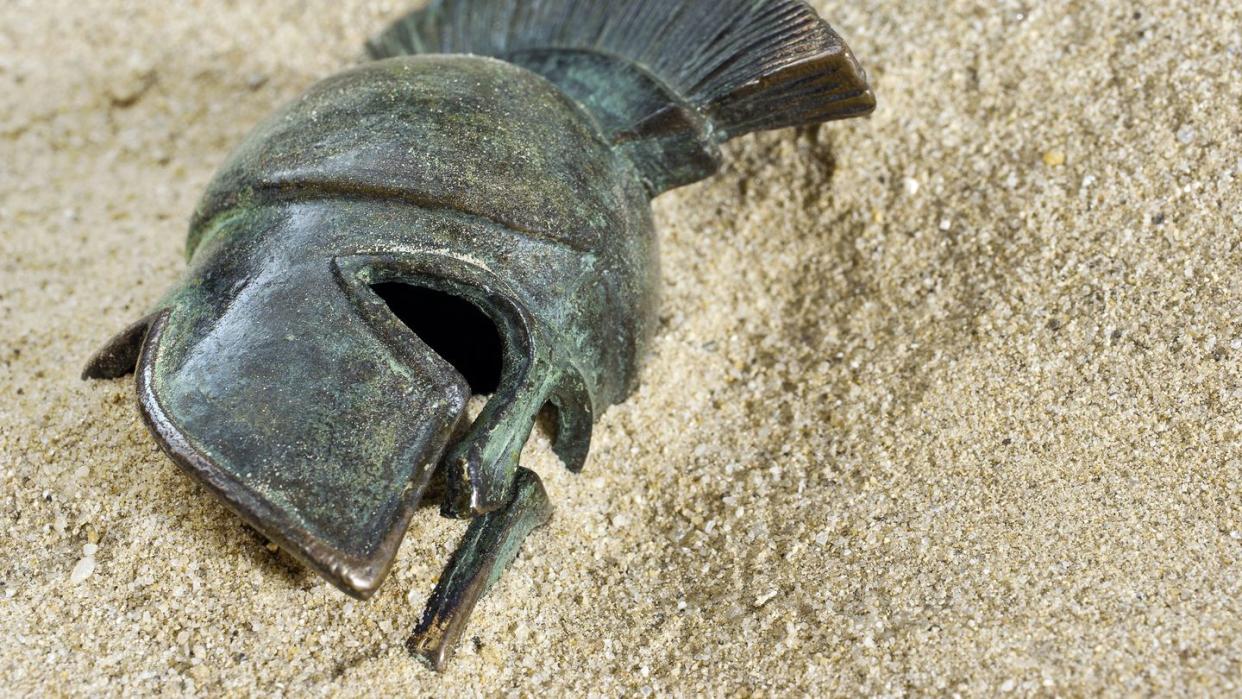An Ancient Tomb Held Anonymous Bodies For 2,300 Years—Turns Out, They're Famous Royals

- Oops!Something went wrong.Please try again later.
"Hearst Magazines and Yahoo may earn commission or revenue on some items through these links."
Alexander the Great was one of history’s greatest generals, but his father—Philip II—was no slouch either. His rule gave rise to Macedonia and its impressive army.
While archaeologists have known that Philip II’s final resting place was in a tomb located at Aigai (now Vergina, Greece), they couldn’t determine which tomb contained his remains.
Now, a new study from an international team of archaeologists confirms the location of Philip’s final resting place using both scientific data and anthropological sources.
Although he only lived to the age of 32, Alexander the Great consistently tops “best of” lists when it comes to military greatness (though, if you were on the receiving end of his “greatness,” you might disagree with the title). With his defeat of the Persian army at the Battle of Guagamela, he became “King of Babylon, King of Asia, King of the Four Quarters of the World” and his battle tactics are still studied to this day.
Of course, Alexander the Great—also known as Alexander III of Macedon—was set up for success. For one, his tutor was none other than Aristotle (yes, that Aristotle). But his biggest military boost came from the fact that his father was King Philip II, who facilitated the rise of Macedonia and created its incredible army that Alexander eventually marched around the eastern Mediterranean, the Middle East, and Asia.
Although Philip II isn’t quite the household name like his famous offspring, the king is now getting some much-deserved time in the limelight some 2,350 years after his assassination in 336 BCE in Aigai (present day Vergina, Greece).
In a new study published in the Journal of Archaeological Science: Reports, archaeologists have finally confirmed that the remains of Alexander the Great’s half-brother, son, and father Philip II indeed rest in the family tomb located in Vergina, Greece.
For two millennia, the town of Aigai was lost to history. But in 1977, Greek archeologist Manolis Andronikos discovered the final resting place of Philip II, and the archaeology site became a UNESCO World Heritage Site in 1996. However, while archaeologists were pretty sure that the remains of Alexander’s father lie in this newly discovered tomb, controversies and disagreements ensued as to who was in which of the three tombs located in the archeological complex.
To solve this mystery, an international team of archaeologists from the U.S., Madrid, and Greece drew data from multiple methods of scientific investigation—osteological analyses, dissections, X-rays, and more—and consulted historical sources. This finally determined that Tomb I contained the remains of Philip II, along with his wife Cleopatra (not that Cleopatra) and their infant son, who were both killed after Philip II’s assassination.
Additionally, Tomb II—which scholars debated might’ve actually contained Philip’s remains—instead belongs to King Arrhidaeus (Alexander’s half-brother) and his wife, a warrior named Adea Eurydice. Finally, Tomb III belongs to Alexander IV, the great Macedonian general’s teenage son.
“We evaluated the hypothesis of Philip II in Tomb II and demonstrated why it cannot be supported, based on a full review of the available evidence,” the paper reads. “Unfortunately, all of the evidence is not yet available. We await the publication of the excavation diaries of Tomb I.”
Few father-son military duos have been so historically transformative as Philip II and Alexander the Great. And now, 2,360 years later, anthropologists and archeologists are finally piecing together the closing chapter of the duo’s first act.
You Might Also Like

